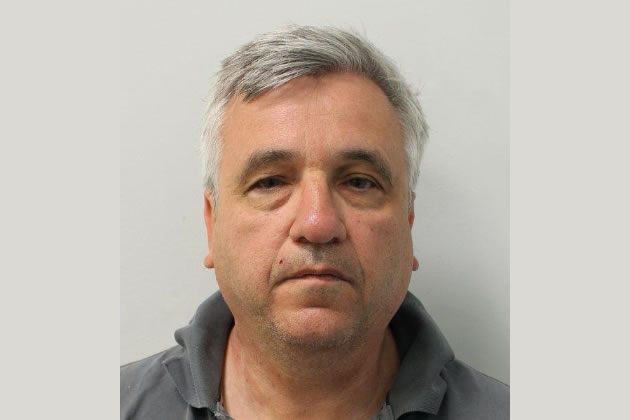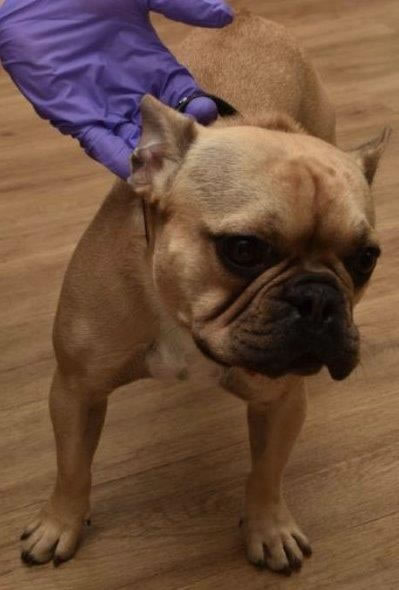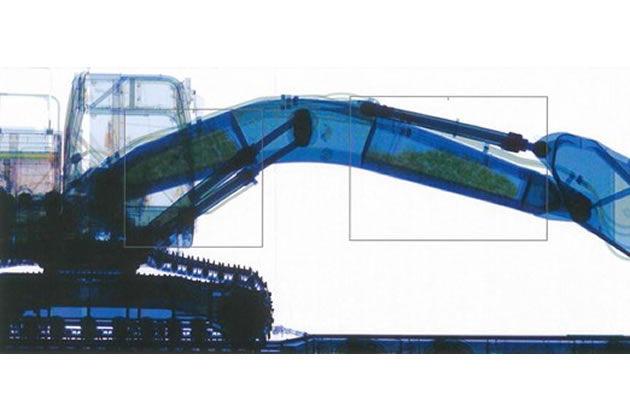Stefan Baldauf planned to ship ecstasy to Australia in a digger

Stefan Baldauf. Picture: NCA
December 6, 2022
An Ealing man who was part of an international drug smuggling ring which shipped MDMA to Australia hidden in a digger was identified due to a selfie he took.
62-year-old Stefan Baldauf of Midhurst Road was jailed for 28 years at Kingston Crown Court this week for being a member of an Organised Crime Group (OCG) which planned to send 448 kilos of the drug worth £45 million in the arm of an excavator.
His part in the conspiracy was confirmed when investigators at the National Crime Agency (NCA), who were monitoring his encrypted messages on the EncroChat system, saw his face reflected in a brass door sign.
One of the other gang members, Danny Brown, aged 55 was identified when he sent a photo of his pet dog Bob to Baldauf, not realising that the police could zoom in and see his partner’s phone number on the animal’s tag. Bob was present when Brown was eventually arrested.
These two photos were key pieces of evidence in the painstaking investigation which led to the gang’s conviction.
MDMA, also known as ecstasy, has a higher street value in Australia than the UK and, in late 2019, Baldauf and Brown, along with Leon Reilly plotted to send the drugs which were 77.5% pure.

The selfie taken by Baldauf which led to his identification. Picture: NCA
The gang had put up the 40-tonne Doosan digger, which they had bought for 75,000 Euros, for online auction to give the export an air of authenticity but became alarmed when other people start to view it online. They had rigged the auction by agreeing a pre-arranged bid with the intended recipients but transcripts from their EncroChat messages show that there was concern a legitimate buyer might have come in and bought the machine with its hidden extras.
The digger had been moved from Leeds by Reilly’s company ‘Mizen Equipment’ and stored by another accomplice, Tony Borg, 44, of Southwark Path, Basildon, who took delivery of the machine at an industrial unit in Grays, Essex, and worked on adapting it for the stowing of the drugs .

Bob the Dog provided a key piece of evidence in the case. Picture: NCA
Philip Lawson, 61, of Wraysbury Road, Staines-upon-Thames, designed the hide and arranged a welder to cut open an arm of the digger and seal the Class A behind a lead lining. Lawson bought a powerful welding machine and arranged for a sign-making company to make some stickers to cover the markings once it had been repainted. It is believed the drugs were hidden inside the digger on 19 December 2020.
In the days before and after, the gang members’ Encro phones were in frequent contact with each other and also used the same cell sites at certain times.
Mizen Equipment paid a haulage firm £1,600 to move the digger to Southampton Docks and it took from 24 January to 13 March to arrive in Brisbane.
Australian Border Force officers x-rayed the digger, removed the drugs, sealed the arm and installed a tracker and listening device before letting it move onto its intended destination - an auction house in Sydney.

X-rays were used to confirm where the drugs were hidden. Picture: NCA
The digger was moved to a small site west of Sydney in May 2020 and Lawson forwarded the Australian OCG a drawn diagram of exactly where the drugs were hidden and how the digger should be opened. On 18 May two men from the Australian side of the gang spent two days trying to find the drugs before realising something was wrong. EncroChat messages show the six men in the UK launched their own investigation and held meetings to find out who had stolen the drugs.
Unbeknownst to the gang, the NCA, as part of Operation Venetic had cracked the EncroChat system which, at the time, was widely used by criminals believing it to be safe from access by law enforcement agencies. The system was closed down after being compromised in 2020.
Real names were not used on the system so the only way to identify the people sending messages was when they inadvertently provided evidence in pictures they sent.
On 15 June 2020 Brown and Baldauf were arrested together in Putney. Brown was in possession of his Encro phone and in Baldauf’s car was an iPhone with messages on it showing that he told people his Encro handle was ‘Boldmove’.
Chris Hill, NCA operations manager, said, “These men thought they were safe on EncroChat but my officers did a superb and painstaking job of building the evidence against them through a mixture of traditional and modern detective skills.
“Brown and Baldauf’s accidental selfies and the photo of Bob the dog were the cherry on the cake in proving who was operating those handles.
“But the OCG went to enormous lengths, even rigging an auction, in a bid to transfer the drugs to Australian conspirators.
“The NCA works with partners at home and abroad to protect the public from the dangers of Class A drugs which wreak so much misery on communities in the UK.”
After being charged, the offenders repeatedly tried to get the case kicked out of court arguing the EncroChat evidence was inadmissible, but a jury convicted them.
As well as Baldauf’s 28 year sentence Brown was jailed for 26 years, Reilly for 24 Lawson for 23 years and Borg for 15 with a sixth man Peter Murray from Greenwich getting 24.
Two men were charged with offences relating to the Australian conspiracy following work between the NCA and Australian Federal Police. They are in the Australian judicial system.
Value Reading Articles Like This? Help Us Produce More This site remains committed to providing local community news and public interest journalism. Articles such as the one above are integral to what we do. We aim to feature as much as possible on local societies, charities based in the area, fundraising efforts by residents, community-based initiatives and even helping people find missing pets. We've always done that and won't be changing, in fact we'd like to do more. However, the readership that these stories generates is often below that needed to cover the cost of producing them. Our financial resources are limited and the local media environment is intensely competitive so there is a constraint on what we can do. We are therefore asking our readers to consider offering financial support to these efforts. Any money given will help support community and public interest news and the expansion of our coverage in this area. A suggested monthly payment is £8 but we would be grateful for any amount for instance if you think this site offers the equivalent value of a subscription to a daily printed newspaper you may wish to consider £20 per month. If neither of these amounts is suitable for you then contact info@neighbournet.com and we can set up an alternative. All payments are made through a secure web site. One-off donations are also appreciated. Choose The Amount You Wish To Contribute. If you do support us in this way we'd be interested to hear what kind of articles you would like to see more of on the site – send your suggestions to the editor. For businesses we offer the chance to be a corporate sponsor of community content on the site. For £30 plus VAT per month you will be the designated sponsor of at least one article a month with your logo appearing if supplied. If there is a specific community group or initiative you'd like to support we can make sure your sponsorship is featured on related content for a one off payment of £50 plus VAT. All payments are made through a secure web site. |